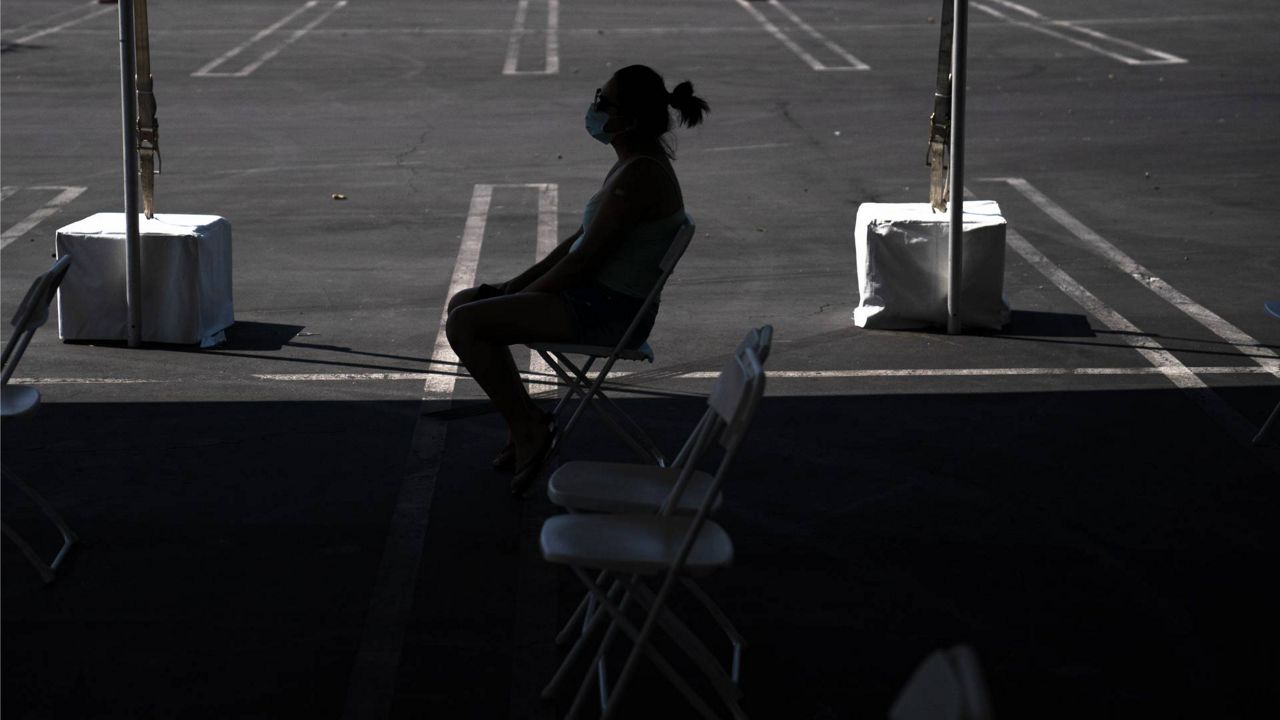SANTA ANA, Calif. (CNS) — Orange County's COVID-19 hospitalizations, which have been trending down, rose a bit Sunday to 488 from 483 on Saturday, according to state figures.
The number of COVID patients in intensive care units dipped from 128 to 126.
What You Need To Know
- OC's COVID-19 hospitalizations rose a bit Sunday to 488 from 483 on Saturday, according to state figures
- The number of COVID patients in ICU dipped from 128 to 126
- The county had 19.9% of its ICU beds available and 66% of its ventilators as of Friday, according to the OC Health Care Agency
- The average age of COVID-19 patients is skewing younger compared with the winter surge
Orange County had seen nearly 600 hospitalized COVID patients the previous week.
The county had 19.9% of its ICU beds available and 66% of its ventilators as of Friday, according to the Orange County Health Care Agency.
Dr. Jim Keany, associate director of the emergency department for Providence Mission Hospital, said the pace of patient admissions has slowed.
"We had a huge influx of patients" at the start of the summer surge, Keany told City News Service. "At Mission Hospital we had 60 patients. We're already down to the 30s. We have definitely come off the highs."
Keany said he was "very worried last month, but vaccination and natural immunity saved us from a horrible summer."
Dr. Matthew Zahn, deputy county health officer, told reporters that "hospitals remain strained, but they're less strained now than they were two or three weeks ago. That is not to say we're back to business as usual.... The situation has gone in general in the right direction, but we're still not out of the woods."
Zahn told reporters Friday that the county was on a "slightly downward trend" for COVID-19 emergencies. At the peak of the latest surge the positivity rates were as high as 8.4%, but that was down to 6.8%, Zahn said.
"It's really important to remember if this is a trend it's a very gradual trend," Zahn said.
Dr. Regina Chinsio-Kwong, a deputy county health officer, also told reporters that residents should take extra precautions against COVID-19 during the Labor Day holiday weekend.
"Most of the transmission of COVID occurs among those not masking and gathering indoors," Chinsio-Kwong said.
Zahn said public health officials are concerned about the fall and winter because there will be more congregating indoors and he thinks the flu season will hit the community harder than last year.
"Last year we were spared a real flu season, but this year we won't be spared an influenza season," Zahn said. "That may likely be added on to the ongoing COVID concerns. I think all of us are clearly watching data very closely... As we get into winter it's going to be even more important everyone gets vaccinated."
That includes not just the COVID-19 vaccines, but flu shots as well, Zahn said.
Keany said the Journal of American Medical Association last week published an important study of blood donors in the U.S. and Kenya that showed rising immunity due to natural infection and vaccines.
In Kenya a year ago in May there was a 4.3% prevalence of antibodies in blood donors and by July it was at 48.5%, Keany said.
"Most of them acquired antibodies through prior infections because only a small fraction of Africa is inoculated," Keany said.
In the U.S., a survey of about 1.4 million blood donor specimens there was 20% infection-induced antibodies, but it was up to 83% overall due to vaccinations and natural infection in May of this year, Keany said.
The more contagious delta variant likely didn't match the winter surge because of the level of vaccination by this summer, Keany said.
The average age of COVID-19 patients is skewing younger compared with the winter surge, so that could be contributing to a higher survival rate, Andrew Noymer, an epidemiologist and UC Irvine professor of population health and disease prevention, told City News Service on Thursday.
Public health experts consider hospitalizations the key metric to gauge the efforts to combat the spread of COVID-19. The three available vaccines get high marks in keeping recipients out of a hospital or experiencing serious illness.
The OCHCA reported Thursday that the county now has 2,019,321 fully vaccinated residents. Of those, 1,885,583 received the two-dose Pfizer or Moderna vaccines and 133,738 received the one-dose Johnson & Johnson vaccine.
Because 455,696 of the county's residents are children up to 11 years old who are ineligible to receive shots, that leaves about 725,000 unvaccinated residents. The county also reported that 233,539 residents have received at least one dose of Pfizer or Moderna.
Orange County Supervisor Katrina Foley cheered the news.
"I think the increase in vaccination is our only way out and it is great to see we've overcome the two million mark," she said.
The OCHCA reported 414 new COVID-19 cases Friday along with the 14 additional deaths, bringing the county's cumulative totals to 286,950 cases and 5,250 fatalities.
The OCHCA does not report COVID-19 statistics on weekends.
A dozen of the fatalities occurred in August, raising the death toll for the month to 73, which stands in contrast with July's 17 deaths. August marks the first time since the winter surge there has been a month-over-month increase in fatalities in Orange County.
One of the fatalities reported Friday occurred in April and the other was Dec. 14.
The death toll for June was 15, with 23 fatalities in May, 45 in April, 199 in March, 615 in February, 1,574 in January — the deadliest month of the pandemic — and 972 in December, the next-deadliest.
Deaths are the final lagging indicator, experts say, so it reflects the ultimate toll from this summer's surge.
"Deaths are going in the wrong direction, but we'll have to see what happens," Noymer said.



